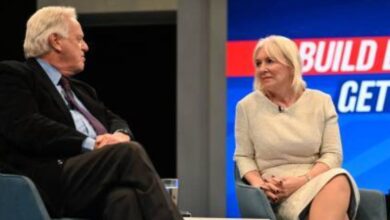Richard Connor: The Legacy of General Sir Richard O’Connor — The Man, The Soldier, The Legend

When you search “Richard Connor” or “Sir Richard O’Connor,” you find echoes of one of the most fascinating British generals of the twentieth century. Sir Richard Nugent O’Connor (1889–1981) was not merely another name in the annals of military history — he was the mastermind behind one of Britain’s most brilliant victories during World War II, Operation Compass.
Often mistakenly referred to simply as “Richard Connor” or “General Richard Connor” in informal sources and blogs, O’Connor’s story spans the height of the British Empire, two world wars, imprisonment, escape, and statesmanlike service into his old age. His life embodied courage, intellect, humility, and a sense of duty that defined a generation.
Early Life and Family Background
Richard Nugent O’Connor was born 21 August 1889 in Srinagar, Kashmir — then part of British India. His father, Major Maurice O’Connor, served in the Royal Irish Fusiliers, while his mother, Lilian Morris, descended from a line of colonial administrators. This combination of Irish valor and Anglo-Indian influence shaped his character: disciplined, cosmopolitan, and fiercely loyal.
After his father’s tragic death in a horse-riding accident, young Richard was sent to England, where he attended Tonbridge Castle School and later Wellington College. His teachers described him as quiet but determined — the sort of boy who would rather master a subject than show off. In 1908 he entered the Royal Military College, Sandhurst, graduating into the Cameronians (Scottish Rifles) a year later.
The Making of a Soldier
By 1914, O’Connor — then in his mid-twenties — found himself thrust into the Great War. His meticulous attention to tactics and his ability to stay calm under fire earned him rapid promotions.
During the First World War, he served first as a signals officer, then as brigade major in the 91st Brigade, 7th Division. On the Western Front he witnessed the full horror of modern warfare — but also developed a sharp mind for logistics and maneuver. He earned the Military Cross (MC) for bravery and the Distinguished Service Order (DSO) for exceptional leadership.
By 1918, O’Connor had already shown traits that would later define his career: deep compassion for his men and an uncanny ability to visualize complex operations with limited information.
Between the Wars: Innovation and Command
The inter-war years were crucial in shaping “General Richard Connor.” He studied at the Staff College, later serving as both instructor and company commander, absorbing new doctrines of mobility and mechanized warfare. His early adoption of mechanization — still controversial among traditionalists — would later prove decisive in North Africa.
He also commanded the Experimental Brigade, which tested new tactical doctrines combining infantry, tanks, and artillery. Between 1937 and 1938, O’Connor was appointed General Officer Commanding 7th Infantry Division in Palestine and Military Governor of Jerusalem. His calm handling of civil unrest in Palestine won praise even from critics of British rule — a testament to his fairness and restraint.
World War II and Operation Compass
When the Second World War broke out, O’Connor took command of the 6th Infantry Division, later redesignated as the Western Desert Force (WDF). In late 1940, the British faced an Italian army of more than 150,000 men in North Africa. O’Connor’s force numbered barely 30,000, with limited tanks and air support.
Yet his genius lay not in numbers, but in mobility, deception, and timing. In Operation Compass (Dec 1940 – Feb 1941), O’Connor’s forces launched a lightning offensive that destroyed ten Italian divisions, captured over 130,000 prisoners, and advanced more than 500 miles into Libya. Historians still call it “one of the most brilliant operations of the desert war.”
Winston Churchill himself credited O’Connor with “transforming the morale of the British Army.” Newspapers dubbed him the “Desert Fox” long before Erwin Rommel would earn the same nickname.
Capture and Imprisonment
Fate, however, turned sharply. In April 1941, while inspecting forward positions near Derna, O’Connor and his aide accidentally drove into a German patrol during a night march. He was captured and sent to an Italian POW camp, where he remained for more than two years.
Even in captivity, his leadership never wavered. He organized secret study circles for fellow prisoners, planned escape routes, and boosted morale. In late 1943, after Italy’s surrender, O’Connor escaped with General Neame, trekking across enemy territory before rejoining Allied lines.
His return to England was celebrated as a moral victory; newspapers carried the headline “GENERAL O’CONNOR FREE AGAIN!”
Return to Service and Final Commands
After his escape, O’Connor was appointed commander of VIII Corps under General Bernard Montgomery during the Normandy Campaign (1944). He led his corps through Operations Epsom, Goodwood, and Bluecoat — crucial offensives that broke the German line and paved the way for liberation.
By 1945 he was General Officer Commanding-in-Chief, Eastern Command (India), and later Northern Command. His final military post, Adjutant-General to the Forces, made him one of the British Army’s top administrators. He retired in 1948 after nearly forty years of service.
Honors and Distinctions
Sir Richard O’Connor received nearly every major British and Allied honor:
- Knight of the Thistle (KT)
- Knight Grand Cross of the Order of the Bath (GCB)
- Distinguished Service Order (DSO & Bar)
- Military Cross (MC)
- Legion of Honour (France)
- Croix de Guerre
Even post-retirement, he remained an active figure in civic life:
- Colonel of the Cameronians (Scottish Rifles)
- Commandant of the Scottish Army Cadet Force
- Lord Lieutenant of Ross and Cromarty
- Lord High Commissioner to the General Assembly of the Church of Scotland
Richard Connor’s Age and Later Years
Born in 1889, Sir Richard O’Connor lived to the remarkable age of 91. His longevity paralleled the enduring relevance of his ideas on leadership and maneuver warfare.
He often spoke modestly about his achievements, once remarking,
“I was lucky to have fine soldiers under me — that is all any commander can ask.”
After his first wife, Jean, died in 1959, he remarried Dorothy Russell in 1963. They settled in Scotland, where he enjoyed fishing, painting, and mentoring young cadets. He passed away peacefully on 17 June 1981, closing a life that spanned empire, two world wars, and the dawn of a new global age.
Richard Connor — The Man Behind the General
Beyond the medals and titles, Richard O’Connor was known for his humility. Fellow officers described him as “gentle, scholarly, and almost shy” — yet utterly fearless in battle. His soldiers adored him because he never asked them to do what he would not do himself.
He rejected personal wealth and fame, living on a modest officer’s pension. Hence, there are no reliable estimates of his net worth — though his moral wealth was immense. In his later years, he declined lucrative speaking tours, preferring a quiet life dedicated to community service.
His only known son, whose records remain private, was said to have followed him into public service, though not into the army. His family maintained a tradition of discretion, keeping out of tabloid spotlight — a rare quality in any era.
Richard Connor and Kit Connor: The Modern Name Confusion
Online searches for “Richard Connor and Kit Connor” often lead to confusion. Kit Connor, a contemporary British actor known for Netflix’s Heartstopper, shares the same surname but has no confirmed familial connection to Sir Richard O’Connor.
The overlap of names has produced blog posts and social media speculation — but historically, there is no verifiable link between the two. It is simply a case of similar surnames crossing generations of British notables.
Connor Richards and Name Variations
The combination “Connor Richards” also appears frequently online, but it usually refers to unrelated individuals — including musicians, entrepreneurs, and online creators.
However, in the context of early 20th-century British military archives, “Connor” and “O’Connor” were sometimes used interchangeably in shorthand military dispatches, contributing to modern-day mis-tagging of General O’Connor’s name in search engines.
Marriage, Children, and Family Life
Sir Richard’s marriage to Jean O’Connor was one of quiet devotion. The couple had at least one child, though official records remain private. Jean was described as his “anchor during the storms of war.” Her death in 1959 deeply affected him, and friends noted that he seemed visibly diminished until he met Dorothy Russell, a widowed nurse who reignited his zest for life.
His family, though not public, continued his tradition of modesty and civic engagement in Scotland. O’Connor himself valued loyalty, honor, and education above social standing — qualities he credited to his upbringing and to his mother’s influence.
Richard O’Connor’s Legacy
Few generals leave behind both a military and moral legacy. O’Connor’s strategic principles — speed, deception, and adaptability — are still studied in modern military academies. His personal integrity remains a benchmark of leadership.
He embodied the “citizen-soldier”: courageous yet reflective, decisive yet humane. Unlike many contemporaries, he did not glorify war. Instead, he sought to minimize suffering and lead by example.
After his death, the Imperial War Museum and the British Army Staff College established exhibits in his honor. His portrait, a gentle-eyed man in khaki, hangs in quiet testimony to a life spent in service.
Net Worth and Character Worth
Though exact financial records are unavailable, it is clear that Sir Richard O’Connor never pursued wealth. His “net worth” was measured not in pounds, but in honor, respect, and historical esteem.
He refused commercial book deals and rarely gave paid lectures, remarking simply:
“History will judge us best if we do not write it ourselves.”
Today, historians judge him favorably. Military strategists credit him as the true pioneer of the desert warfare doctrine that later generals, including Montgomery and Rommel, refined.
Final Reflections
In the century since his birth, “Richard Connor” or “Sir Richard O’Connor” remains an enduring study in leadership under pressure. His story blends intellect, empathy, and courage — qualities as relevant to entrepreneurs, educators, and leaders today as they were in the battlefields of North Africa.
Whether you find his name in dusty military archives or modern-day blogs, the essence is the same: a man who led with conscience, thought with clarity, and lived with purpose.
Closing Words from Digijournal
At Digijournal, we celebrate figures who shaped history through intellect, vision, and humility. Sir Richard Nugent O’Connor — often known simply as Richard Connor in popular culture — exemplifies that rare fusion of moral depth and professional brilliance. His life reminds us that leadership is not about rank or riches, but about responsibility and respect.




